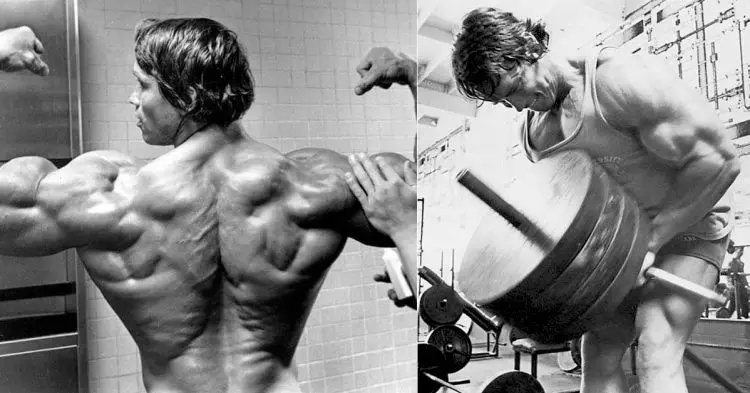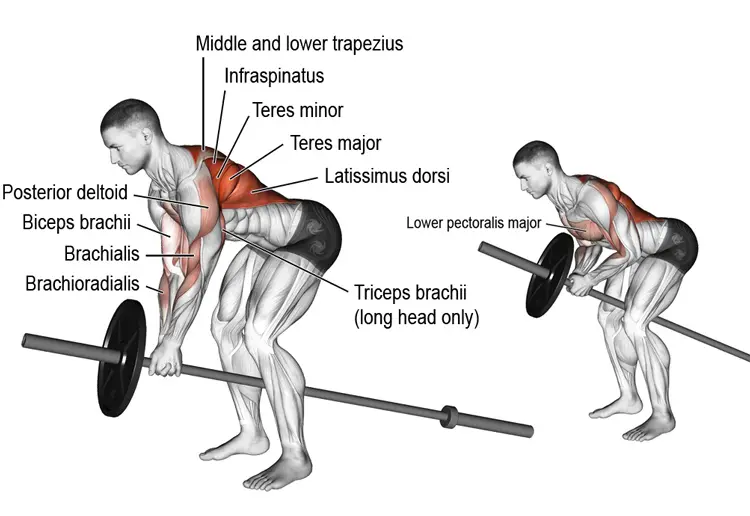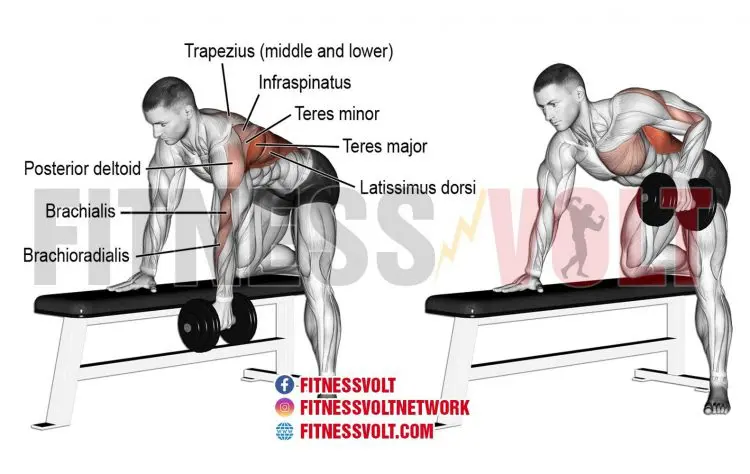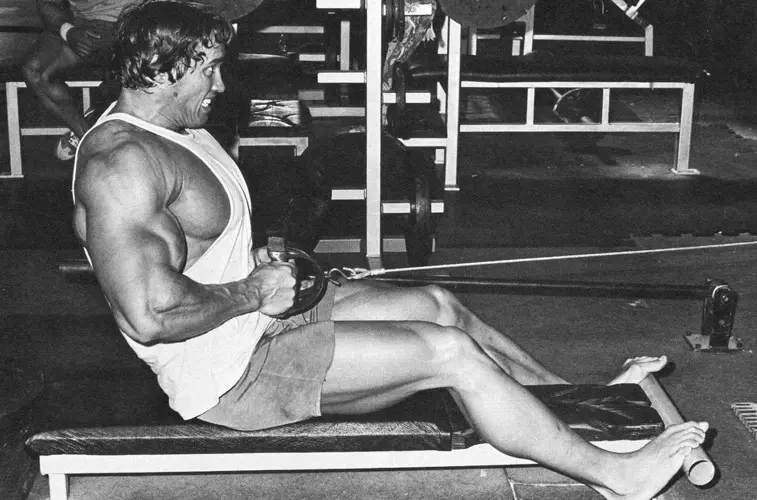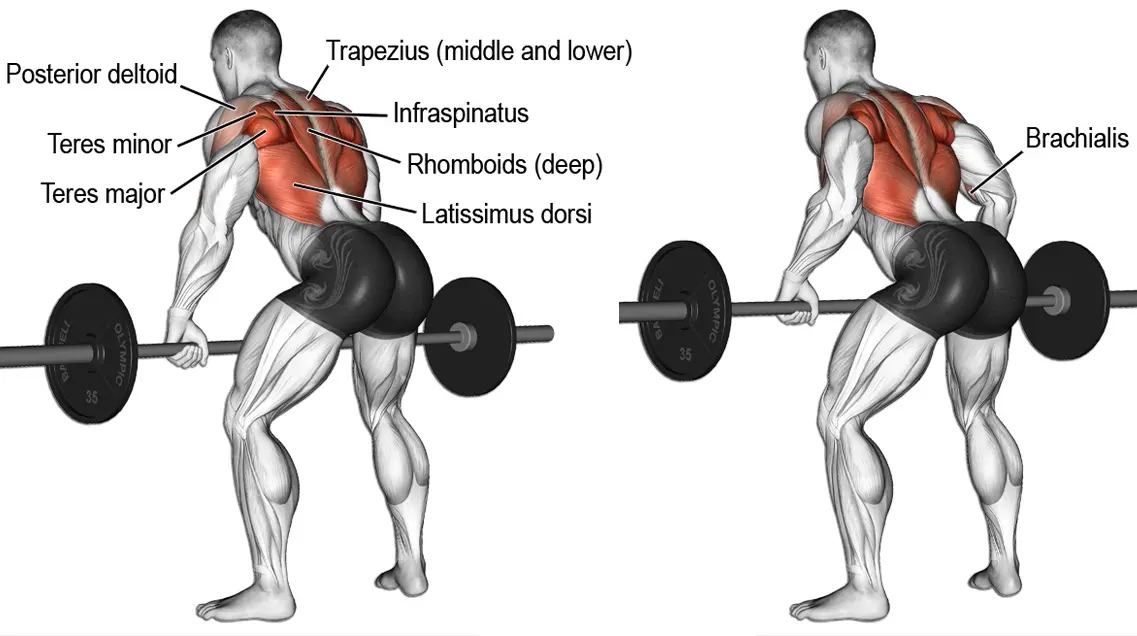If you want your back to grow, you’ve got to row, or so bodybuilding lore tells us. Many lifters rely very heavily on things like pulldowns and pull-ups to build their backs, but, for creating back thickness, rows are a must.
Of all the rowing exercises you can do, T-bar rows are one of the most well-liked. But, as useful as this exercise is, there will be times when you won’t be able to do it, or just feel like you need a change.
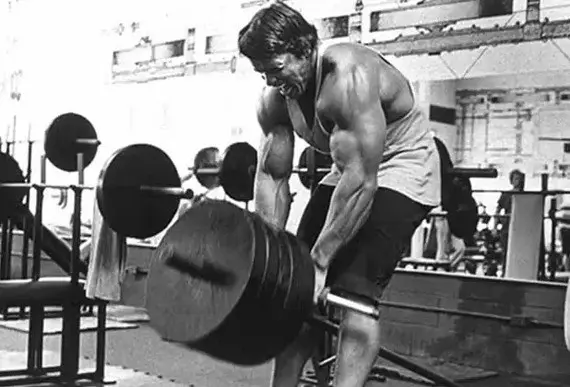
Thankfully, there are lots of rowing-type exercises that you can use to build a strong, wide, thick upper back.
T-Bar Row Basics
Before we reveal the best T-bar row alternative exercises, let’s take a quick look at what makes this exercise so good for building back strength and size. After all, it’s been popular for a long time, so it must be pretty good, right?!
A comprehensive back exercise – T-bar rows work a LOT of muscles! As well as using your lats, they also work your middle trapezius and rhomboids, posterior deltoids, biceps, erector spinae, core, glutes, hamstrings, and quads. This makes them a very time-efficient exercise.

Less low back strain than barbell bent-over rows – with T-bar rows, you can sit back and keep the weight over your feet, which helps take stress off your lower back. Your lower back is still involved in T-bar rows, but it doesn’t have to work as hard as it does in barbell bent-over rows. That’s good news if your lower back is sore, or you just want to work your lats without hammering your erector spinae.
Level Up Your Fitness: Join our 💪 strong community in Fitness Volt Newsletter. Get daily inspiration, expert-backed workouts, nutrition tips, the latest in strength sports, and the support you need to reach your goals. Subscribe for free!
It’s easier to learn than barbell rows – most bodybuilders know that barbell rows are a good back builder, but they also know it’s a tricky exercise to master. You need to choose your hand position carefully, get the angle of your spine just right, and even think about your feet too. On top of all that, you also need to deadlift the bar off the floor to get it into the right position to start rowing.
T-bar rows are much more straightforward, better for beginners, and ideal for any time you need a less complicated back exercise.
Different grips available – most T-bar row machines provide several different hand placement options, including wide, narrow, straight, angled, overhand, underhand, and parallel. Changing hand positions will affect your muscles slightly differently and can be enough to add a little extra variety to your workouts, ensuring that you continue making progress.
It’s the back-builder of champions!– bodybuilders have used T-bar rows to build their backs for well over 50 years, not least Arnold Schwarzenegger. There is a reason this exercise is so widely used and loved; it really works!
There are different options available – there are two main types of T-bar row machines available: freestanding and chest-supported. With the freestanding version, you stand with your feet about shoulder-width apart and lean forward from your hips, using your legs, lower back, and core to hold your torso in position.
With the chest supported version, you lean your upper body against a pad. This version is much easier on your lower back. These two variations mean you can choose the best type of T-bar row for your needs and abilities.
Also check T-Bar Row Exercise Guide.
The 10 Best T-Bar Row Alternatives
No T-bar row machine at your gym? Do you work out at home? Are you fed up with T-bar rows and need a replacement? Here are ten T-bar row alternative exercises to try!
1. Barbell T-Rows
You don’t need a T-bar row machine to do T-bar rows. In fact, all you really need is a barbell, some weight plates, and a V-shaped handle. To do this exercise, wedge one end of your barbell into a corner, and put the required number of plates on the other. Stand astride the bar and use a V-shaped handle to create a parallel grip. This is the perfect T-bar row alternative for home exercisers.
No V-shaped bar available? You can also do this exercise with your fingers interlocked instead. It’s not as comfortable, but it works almost as well.
2. Chest-supported dumbbell rows
This T-bar row alternative is a real lower back saver! With no strain on your lower back, you’re free to focus on working your upper back and biceps safely and to failure should you so wish. Using dumbbells means you can work each arm independently, making it easier to spot and fix any left to right strength imbalances.
How to do it:
- Adjust the backrest on an exercise bench to between 30-45 degrees. Lie face down on the bench with a dumbbell in each hand. Let your arms hang straight down. Turn your wrists, so your palms are facing inward – a neutral grip. Pull your shoulders down and back.
- Bend your arms and pull the weights up and into the side of your ribs. Keep your upper arms close to your body, your wrists straight, and focus on leading with your elbows.
- Lower the weights and repeat.
- You can also do this exercise with a barbell, but you will find that, because the bar hits the underside of the bench, you won’t be able to use such a large range of motion.
2. Body rows
Also known as inverted pull-ups, body rows work many of the same muscles as T-bar rows but are much easier on your lower back. All you need for this exercise is a bar set to around waist height, a suspension trainer, a strong, heavy table, a strong broomstick or mop handle and two chairs, or gymnastic rings. You can do this exercise at the gym or at home. You may also be able to find places to do body rows outside, such as a playground.
Learn more about inverted row.
4. Single-arm dumbbell rows
If unsupported T-bar rows have a disadvantage, it is that they can be hard on your lower back. Even though the weight is closer to your center of gravity than with regular barbell rows, a lot of exercisers still find T-bar rows work their lower backs as much as their lats.
Because you’ve got one arm free, single-arm dumbbell rows allow you to support your upper body, which takes stress off your lower back. They also mean you can work one side at a time. Single-arm dumbbell rows are a very useful T-bar row alternative.
Level Up Your Fitness: Join our 💪 strong community in Fitness Volt Newsletter. Get daily inspiration, expert-backed workouts, nutrition tips, the latest in strength sports, and the support you need to reach your goals. Subscribe for free!
Read more about bent over dumbbell-row.
5. Pendlay rows
This superb back-builder is named after American Olympic weightlifting and powerlifting coach Glenn Pendlay. It’s a barbell rowing exercise, but each rep starts with the weight resting on the floor. This takes a lot of stress off your lower back, gives you a chance to reset your core between reps, and also eliminates a lot of momentum, making it a much more intense exercise. Pendlay rows are especially suited for heavy weights and low reps.
Learn more about pendlay rows.
6. Seated cable rows
Seated cable rows might not look a whole lot like T-bar rows, but the movement is very similar. However, rowing while seated instead of bent over puts less stress on your lower back because you don’t have to support the weight of your upper body.
Like T-bar rows, you can do seated cable rows using a wide, narrow, overhand, underhand, or neutral grip. As an added advantage, cable rows are perfect for intensity-boosting drop sets, which is something that’s usually impractical with T-bar rows.
Learn more about seated cable row.
7. Renegade rows
T-bar rows involve a large number of muscles. In fact, they’re almost a full-body exercise. Renegade rows are similar in that they use your entire body.
This makes them a very functional, time-efficient movement. You won’t be able to use heavy weights for renegade rows, but that doesn’t mean this T-bar row alternative is easy. In fact, this is a very challenging exercise.
8. Sternum pull-ups
Where T-bar rows are a horizontal pulling exercise, pull-ups are a vertical pulling exercise, or at least that’s usually the case. Sternum pull-ups, also known as Gironda pull-ups, start off like regular pull-ups but then morph into a type of row. This makes them an effective bodyweight T-bar row alternative.
How to do it:
- Using a neutral or parallel grip, hang from a pull-up bar with your arms straight and legs bent, feet crossed if you wish.
- Bend your arms and simultaneously lean back, pulling your chest up to the bar instead of your chin.
- Focus on leading with your elbows and pulling your shoulders down and back throughout. Do not kick with your legs or try to swing yourself up.
- Extend your arms and repeat, but do not relax between reps. Keep your shoulders down and back from the start of your set to the end.
9. Deadlifts
Deadlifts look nothing like T-bar rows, and yet, they work almost all of the same muscles. When you deadlift, you must use your lats to keep the bar close to your legs. If you don’t, the weight will swing forward and pull you off balance.
Also, during deadlifts, your mid traps and rhomboids pull your shoulders back and together, and you’ve got to use your glutes, hamstrings, and lower back too, just like with T-bar rows. It’s no coincidence that a lot of bodybuilders use deadlifts to build back size and strength.
Related: Understanding The Deadlift And How To Improve It
The barbell bent-over row is a classic bodybuilding, strength building exercise. It’s also somewhat controversial, and some coaches don’t like it because, done improperly or with too much weight, it can cause serious back injuries.
But, if you take the time to learn how to do it correctly, and use light to moderate weights, this exercise is an excellent T-bar row alternative which, ironically, was invented as an alternative to barbell bent-over rows!
Learn more about bent over barbell row.
You can also do bent-over rows using a resistance band. Just stand on the center of the band and row the handles up and into your ribs. The wider your feet are, the more tension there will be on the band, and the more demanding the exercise becomes.
The Best T-Bar Row Alternative – Wrapping Up
If you want to build a strong, muscular back, rows should be a part of your workouts. Pulldowns and pull-ups are important, but so too are rows. We’d even go so far as to say that rows are crucial for building your best ever back.
T-bar rows are a fantastic exercise, but that doesn’t mean it’s the only exercise that’s worth doing. While it does have advantages (e.g. it’s easier on your lower back than some other rowing exercise), it has disadvantages too.
For example, if you train at home, you may not have access to a T-bar row machine. Also, some gyms only have one machine available and, because it’s a popular exercise, you could find yourself at the back of a long queue waiting to use it. Plus, if you become over-reliant on T-bar rows, your muscles will soon get accustomed to it, and it will cease to be so productive.
The good news is that, armed with this list of ten T-bar row alternative exercises, you have plenty of training options to keep your workouts fresh and interesting. Can’t do the T-bar row? Don’t worry; each of these exercises is every bit as effective.

